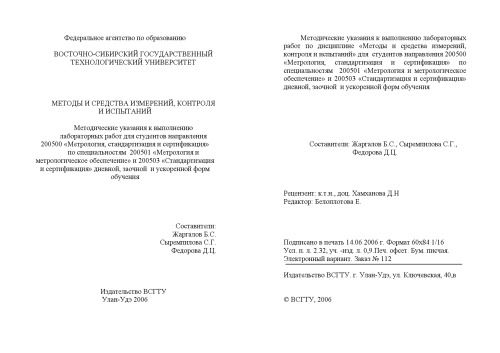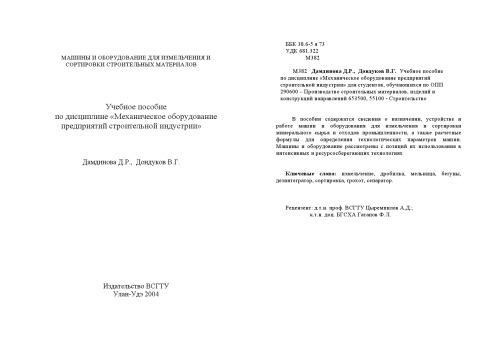- 2 402 202 книги
- Поиск
libcats.org












Symbiosis: An Introduction to Biological Associations
Surindar Paracer, Vernon AhmadjianSymbiosis by Surindar Paracer and Vernon Ahmadjian is an extensive view into the remarkable world of symbiotic relationships across all different organisms throughout the varying Kingdoms. The topics covered range from viral and bacterial pathogenesis, the symbioses possible in the origins of the Eukaryotic cell and fungal relationships between plants, animals, and fungi. Also covered are the symbiotic relationships that compose parasitic infections, animal parasitism, plant-pollinator relations, behavioral and social symbioses, and finally, co-evolution. The book does an excellent job in separating the levels of symbioses as they span through the varying bacteria, protozoa, fungi, plants, and animals. Also, brief examples of previous research are given as well as numerous references to these experiments.
The first topic discussed in Symbiosis is that of viral associations with differing organisms such as humans, insects, and fungi. An in depth approach is taking discussing the multiple taxonomic variations found in the seven main viruses. Pathogenesis such as HIV in humans is touched on as well as the replication methods that viruses use in order to infect their hosts. After the viruses, the bacteria and their effects on animals, protozoa, and other bacteria are approached. The topics approached include predatory bacteria and the parasitism of amoebas within human intestinal tracts. Bacterial bioluminescence as found within many marine species of fish and squid are explained as well. Finally, the topic of rumen microbial ecosystems is approached and a thorough explanation of the bacterial association is explained. The topic of bacterial pathogenesis touches upon the topics of Salmonella, Mycobacterium tuberculosis, and E. coli. The detail covered in the text includes both the possible origins of the varying bacteria and the molecular compositions of the varying species.
The symbiotic relationships found among plants are discussed including the Nitrogen fixing bacteria found within legumes and other plants. Other plants affected by symbiotic relationships include the Bryophytes and Cycads. Due to these organisms extended history, the extent of time that a symbiotic relationship has been shared is clear and impressive. The angiosperms are touched upon briefly dealing with such diseases as vascular wilts, soft rots, scabs, and cankers.
An interesting chapter focuses mainly solely on the Serial Endobymbiosis theory and similar symbiotic cell theories such as the Hydrogen Hypothesis. In extreme detail these topics are diagrammed and explained as how the mitochondria and chloroplasts have found there where within other cells. Also included in this endosymbiosis theory are the acquisition of microtubules for movement, peroxisomes, hydrogenosomes, and even the nucleus of cells. An interesting viewpoint is explored as the host cell being analogous to that of an intracellular ecosystem.
A book cannot be written on symbiosis without dealing with the fascinating world of fungi. In Symbiosis the fungal associations found between protozoa and animals are discussed first. The intriguing topic of predatory fungi is explored in great depth including the multitudes of trap types that fungi used. The world of insects and their relations with fungi is touched upon as well discussing the wood wasp and scolytid beetle. The fungal gardens maintained by some of these creatures for nourishment as well as some wasps and ants are of extreme interest. The chapter immediately following tackles fungal associations found in fungi, algae, and especially plants. The topic of lichens is explained, exampled, and discussed in great depth including types of lichens, distribution, dispersal and reproduction, as well as the recognizing mechanisms between fungi and algae/cyanobacterium, case pending. After lichens are thoroughly discussed the topic of mycorrhiza is approached and discussed in great depth including vesicular and arbiscular forms as well as ectendomycorrhiza and ericoid mycorrhiza, dealing with coniferophyta and heather families, respectively. Some topics of fungal associations with plants are approached and interesting methods such as castration of the plant and devastating rust, smut, and mildew diseases.
The next world explored encompasses protozoa and there mutualistic and parasitic relationships on plants, animals, and other protozoa. The topic of ruminant symbioses is revisited with ciliates as well as that found within the tadpoles of amphibian genus Opalina. A fascinating occurrence found in both Opalina and other organisms is the ability for the parasite to correspond with the life cycle of the organism. The largest portion of the chapter deals with malaria and the mechanisms involved in the complex transfer and history of the disease. This chapter supplies excellent diagrams and life-cycle charts to plot the life cycles and mechanisms used by the protozoa and the insects or animals they inhabit. The marine world is briefly approached in the relationships among sea sponges and anemones as well as jellyfish. Some of these marine species have changed their behavior drastically in order to maximize the photosynthesis of their endosymbiotic partners such as the Cassiopeia xamachana or upside down jellyfish. Many cases are given of the photosynthesis adaptations in the marine and intertidal world of these creatures.
The stomach churning chapter of animal parasitism is certainly one to make you second guess your future food choices. This chapter deals specifically with flukes, nematodes, tapeworms, and parasitoids and goes into great depths of the organisms, their methods, and the eventual unfortunate outcomes of their hosts. As with previous chapters the extensive diagrams allow the reader to properly understand the conveyed paths used by the worms in their travels through intermediate host and into their desired system. The fascinating topic of parasitoids is approached and the insect-worm relationships are viewed in some depth including the famous fig and wasp situations of mutualism and co-evolution.
Dealing with the angiosperms the topic is brief, but concise. This chapter is an excellent lead into the final chapter of co-evolution as it deals with tree-ant symbioses as well as the extremely co-evolved world of plants and pollinators, and the sycamore fig-gall wasp association is touched in greater deal. The final portion of the chapter deals with parasitic plants such as the dodders, mistletoes, and the world's largest flowering plant, the Rafflesia arnoldii.
Possibly the best topic of the book was saved for last dealing with behavioral and social symbiosis and co-evolution. The topic of cleaning fish is dealt with in great deal as well as the modifications that can be found in host-parasite interactions. Social parasitism found in wasps, ants, and termites is discussed as well as that of cowbirds and their highly developed brood parasitism shared with cuckoos. The book ends with an overview of the molecular and genetic approaches to viewing symbiosis. Although it gets somewhat dense at this point it is important to understand the relationships found between genetic polymorphism and its common occurrence among individuals who share symbiotic relationships.
On the whole, Symbiosis does an excellent job of covering the dense world of symbiotic relationships in a relatively short amount of space while still giving multiple examples, detailed drawings, and uncountable references for further investigation. This book is a definite read for any novice interested in the world of symbiotic relationships or any well developed biologist interested in learning more through brief examples and extensive references.
The first topic discussed in Symbiosis is that of viral associations with differing organisms such as humans, insects, and fungi. An in depth approach is taking discussing the multiple taxonomic variations found in the seven main viruses. Pathogenesis such as HIV in humans is touched on as well as the replication methods that viruses use in order to infect their hosts. After the viruses, the bacteria and their effects on animals, protozoa, and other bacteria are approached. The topics approached include predatory bacteria and the parasitism of amoebas within human intestinal tracts. Bacterial bioluminescence as found within many marine species of fish and squid are explained as well. Finally, the topic of rumen microbial ecosystems is approached and a thorough explanation of the bacterial association is explained. The topic of bacterial pathogenesis touches upon the topics of Salmonella, Mycobacterium tuberculosis, and E. coli. The detail covered in the text includes both the possible origins of the varying bacteria and the molecular compositions of the varying species.
The symbiotic relationships found among plants are discussed including the Nitrogen fixing bacteria found within legumes and other plants. Other plants affected by symbiotic relationships include the Bryophytes and Cycads. Due to these organisms extended history, the extent of time that a symbiotic relationship has been shared is clear and impressive. The angiosperms are touched upon briefly dealing with such diseases as vascular wilts, soft rots, scabs, and cankers.
An interesting chapter focuses mainly solely on the Serial Endobymbiosis theory and similar symbiotic cell theories such as the Hydrogen Hypothesis. In extreme detail these topics are diagrammed and explained as how the mitochondria and chloroplasts have found there where within other cells. Also included in this endosymbiosis theory are the acquisition of microtubules for movement, peroxisomes, hydrogenosomes, and even the nucleus of cells. An interesting viewpoint is explored as the host cell being analogous to that of an intracellular ecosystem.
A book cannot be written on symbiosis without dealing with the fascinating world of fungi. In Symbiosis the fungal associations found between protozoa and animals are discussed first. The intriguing topic of predatory fungi is explored in great depth including the multitudes of trap types that fungi used. The world of insects and their relations with fungi is touched upon as well discussing the wood wasp and scolytid beetle. The fungal gardens maintained by some of these creatures for nourishment as well as some wasps and ants are of extreme interest. The chapter immediately following tackles fungal associations found in fungi, algae, and especially plants. The topic of lichens is explained, exampled, and discussed in great depth including types of lichens, distribution, dispersal and reproduction, as well as the recognizing mechanisms between fungi and algae/cyanobacterium, case pending. After lichens are thoroughly discussed the topic of mycorrhiza is approached and discussed in great depth including vesicular and arbiscular forms as well as ectendomycorrhiza and ericoid mycorrhiza, dealing with coniferophyta and heather families, respectively. Some topics of fungal associations with plants are approached and interesting methods such as castration of the plant and devastating rust, smut, and mildew diseases.
The next world explored encompasses protozoa and there mutualistic and parasitic relationships on plants, animals, and other protozoa. The topic of ruminant symbioses is revisited with ciliates as well as that found within the tadpoles of amphibian genus Opalina. A fascinating occurrence found in both Opalina and other organisms is the ability for the parasite to correspond with the life cycle of the organism. The largest portion of the chapter deals with malaria and the mechanisms involved in the complex transfer and history of the disease. This chapter supplies excellent diagrams and life-cycle charts to plot the life cycles and mechanisms used by the protozoa and the insects or animals they inhabit. The marine world is briefly approached in the relationships among sea sponges and anemones as well as jellyfish. Some of these marine species have changed their behavior drastically in order to maximize the photosynthesis of their endosymbiotic partners such as the Cassiopeia xamachana or upside down jellyfish. Many cases are given of the photosynthesis adaptations in the marine and intertidal world of these creatures.
The stomach churning chapter of animal parasitism is certainly one to make you second guess your future food choices. This chapter deals specifically with flukes, nematodes, tapeworms, and parasitoids and goes into great depths of the organisms, their methods, and the eventual unfortunate outcomes of their hosts. As with previous chapters the extensive diagrams allow the reader to properly understand the conveyed paths used by the worms in their travels through intermediate host and into their desired system. The fascinating topic of parasitoids is approached and the insect-worm relationships are viewed in some depth including the famous fig and wasp situations of mutualism and co-evolution.
Dealing with the angiosperms the topic is brief, but concise. This chapter is an excellent lead into the final chapter of co-evolution as it deals with tree-ant symbioses as well as the extremely co-evolved world of plants and pollinators, and the sycamore fig-gall wasp association is touched in greater deal. The final portion of the chapter deals with parasitic plants such as the dodders, mistletoes, and the world's largest flowering plant, the Rafflesia arnoldii.
Possibly the best topic of the book was saved for last dealing with behavioral and social symbiosis and co-evolution. The topic of cleaning fish is dealt with in great deal as well as the modifications that can be found in host-parasite interactions. Social parasitism found in wasps, ants, and termites is discussed as well as that of cowbirds and their highly developed brood parasitism shared with cuckoos. The book ends with an overview of the molecular and genetic approaches to viewing symbiosis. Although it gets somewhat dense at this point it is important to understand the relationships found between genetic polymorphism and its common occurrence among individuals who share symbiotic relationships.
On the whole, Symbiosis does an excellent job of covering the dense world of symbiotic relationships in a relatively short amount of space while still giving multiple examples, detailed drawings, and uncountable references for further investigation. This book is a definite read for any novice interested in the world of symbiotic relationships or any well developed biologist interested in learning more through brief examples and extensive references.
Популярные книги за неделю:

Проектирование и строительство. Дом, квартира, сад
Автор: Петер Нойферт, Автор: Людвиг Нефф
Размер книги: 20.83 Mb

Система упражнений по развитию способностей человека (Практическое пособие)
Автор: Петров Аркадий НаумовичКатегория: Путь к себе
Размер книги: 818 Kb

Сотворение мира (3-х томник)
Автор: Петров Аркадий НаумовичКатегория: Путь к себе
Размер книги: 817 Kb

Радиолюбительские схемы на ИС типа 555
Автор: Трейстер Р.Категория: Электротехника и связь
Размер книги: 13.64 Mb
Только что пользователи скачали эти книги:

Работа по распределению
Автор: Шедогуб ЗинаидаКатегория: Короткие любовные романы
Размер книги: 89 Kb

Красные дьяволы'''' в небе Кореи. Советская авиация в войне 1950-1953 гг. Хроника воздушных сражений''
Автор: Игорь Сейдов
Размер книги: 28.29 Mb

Тестирование Дот Ком, или Пособие по жестокому обращению с багами в интернет-стартапах
Автор: Роман Савин
Размер книги: 5.26 Mb

Методы и средства измерений, контроля и испытаний: Методические указания к выполнению лабораторных работ
Автор: Жаргалов Б.С., Автор: Сыремпилова С.Г., Автор: Федорова Д.Ц.Категория: Методы и средства измерений
Размер книги: 477 Kb

Механическое оборудование предприятий строительной индустрии. Учебное пособие
Автор: Дамдинова Д.Р., Автор: Дондуков В.Г.Категория: Строительство. Архитектура
Размер книги: 998 Kb

Roman Army from Hadrian to Constantine (Osprey Men-at-Arms 93)
Автор: Michael Simkins
Размер книги: 32.65 Mb

Unpublished Stock Market Forecasting Courses
Автор: Gann W DКатегория: fiction
Размер книги: 78.59 Mb

Patricia King Collection (21 Books) (Mobi, Epub & PDF)
Автор: Patricia KingКатегория: Christian
Размер книги: 59.87 Mb


